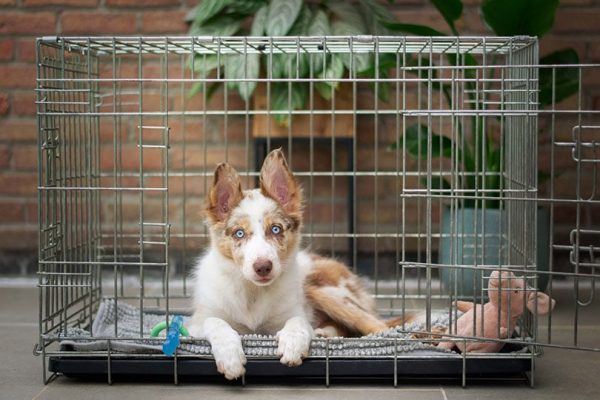Considering the financial investment of owning a pet is imperative. After all, one of the reasons some people relinquish their animal companions is because they underestimate the cost of pet ownership. The estimated annual cost of owning a dog is roughly $1,270 to $2,803, and $961 to $2,487 for a cat. Veterinary services can account for up to 40% of these expenses. Therefore, it makes sense to plan ahead and try to find an affordable vet.
Finding a vet before you bring home your pet is a must. We recommend taking your time to choose one that fits your needs since you are going to have a long relationship with the individual. Of course, affordability is a big part of the mix. Our guide will provide the information you need to find the best fit for you and your new pet, all without costing an arm and a leg.

The 11 Tips for Finding an Affordable Vet
Clearly, getting a pet involves more than just the purchase price or adoption fee. The first year is typically the most expensive for pet owners, particularly if you get a puppy or kitten. Your initial costs will include things like spaying or neutering, microchipping, and vaccinations.
1. Ask Friends and Families About Their Experiences
We suggest beginning your search by asking friends and families about the veterinarians they go to. They can give you the scoop of what they like and dislike, as well as general costs. Encourage them to be candid with you about their experiences, and remember that it’s an important decision that can play a significant role in your pet’s well-being.

2. Check Online Reviews
You can check sites like Yelp or Google Business to learn about other people’s experiences that they’ve had with vets in your area. Don’t just rely on the testimonials on the clinic’s website. No business is going to publish anything that’s less than a glowing review. However, they are a good barometer of the level of care you can expect.
However, take online reviews with a grain of salt. They are likely weighted on either end of the spectrum. People are more likely to publish either a scathing negative review or a positive one, with few in between.
3. Talk to a Vet Online
Another budget-friendly alternative is having an online vet appointment. Not every dog health concern requires going to the vet’s office in person. For general advice, minor issues, or follow-up questions, online vet consultations and pet telehealth can be a convenient and affordable alternative. Many virtual vet services are significantly cheaper than traditional vet clinics, making them a budget-friendly option when your questions about your pet don’t require hands-on care. They aren’t a substitute for in-person care, but rather a supplement.
Online vets can offer guidance on signs of health and behavior issues, training tips, and nutritional advice, helping you decide whether an in-person appointment is necessary, or if personalized home care advice is enough to treat your dog. If you have a nervous pup, another benefit is that your dog won’t feel the anxiety of going into a vet’s office unless it is necessary. With an online vet appointment, you can get expert advice without leaving your couch, saving you time, money, and stress.
Did you know you can speak to a veterinarian without having to travel? Just head over to PangoVet. It's our online service where you can talk to a vet online and get the advice you need for your pet — all at an affordable price!

4. Learn What’s Average for Your Area
Affordability is subjective. There’s your side of the matter versus the prices that the market will bear. Therefore, you should research what to expect for routine services like vaccinations. Care Credit has a summary of costs for checkups and procedures. They also provide information by the state. Banfield Pet Hospital also has a price estimator calculator where you can enter your zip code for costs. However, prices can vary widely even within the same metro area, meaning you will likely want to check out options in several different neighborhoods or towns.

5. Look for Low-Cost Dog Vaccine Clinics for the Basics
You can ask your local animal shelter about free or low-cost vaccinations. Many organizations have recognized the benefits and value pets bring to people’s lives and offer options if money is an issue. You can find a vet for the big stuff like annual exams and then use these services for the basics to save money.
6. Research Pet Insurance
Pet insurance is an excellent investment to help pay for significant expenses, such as surgeries and diagnostics. Many insurers allow you to choose your vet. You have flexibility with the cost by choosing different payout caps and deductibles to get an affordable monthly premium. However, it’s worth noting that most policyholders are usually reimbursed on claims.
Some pet insurance companies work directly with veterinarians to pay invoices. However, you will likely be limited to specific clinics.

7. Enroll in a Wellness Protection Plan
Many insurers offer wellness protection plans for preventive care services like annual vet check ups, vaccinations and heartworm testing. They are typically add-ons to a basic or comprehensive plan. Reimbursement is often a portion of the total cost. Nevertheless, a complete annual exam will more than likely make it a worthwhile investment. We suggest reading the fine print with wellness plans. Companies vary widely in covered expenses and conditions, but finding a good plan can save you lots of money in the long run.
8. Create a Shortlist of Vets
Some clinics may have limited opportunities for new clients. Therefore, we recommend creating a shortlist of possible choices. Consider other factors that can make a difference, such as the service hours and availability of appointments, including weekends. Ask about playtime and doggie daycare services if you are getting a new puppy as well. We’re big fans of writing out the pros and cons when faced with an important decision like choosing a vet, and using a similar system can definitely help you find one that gives you the most bang for your buck.

9. Ask About a Meet-and-Greet Appointment
Some clinics may offer meet-and-greet appointments where you can talk informally with a vet and ask questions about their services. After all, it often comes down to that first impression. It’s helpful if you have a unique situation with your pet, such as a chronic illness. If this is possible, have a list of questions ready for your appointment.
10. Consider a Health and Pet Care Credit Card
Unexpected vet expenses can leave pet owners strapped for cash. Healthcare financing credit cards like Care Credit can help you pay for these costs. Consider applying when you get your animal companion before you need it. That’ll give you peace of mind knowing you’re covered financially if anything happens. Scratch Pay is another service that allows you to split your expenses into five payments. Always research interest rates, terms and fees which vary between credit cards.
11. Investigate Pet Assistance Programs
It’s far better to ensure your pet gets the care they need instead of postponing attention because of financial reasons, as neglect often makes things worse. The Best Friends Animal Society maintains a list of financial assistance programs that may offer help to pay veterinary expenses. Some are quite specific in their availability. You’ll find selecting some that apply to your situation will streamline the process.

Final Thoughts
Veterinary care is vital for your pet’s quality of life and well-being. However, we understand that it can be a financial burden. Looking for an affordable vet involves research. The good news is that you have many options if something unexpected arises. Knowing what’s available is essential to help you make informed choices.
Featured Image Credit: nakaridore, Freepik


















